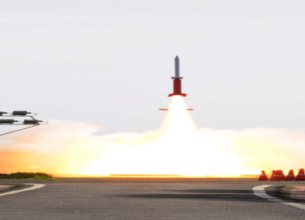NEW ISRO SYSTEM TO SHIELD ITS ASSETS FROM SPACE DEBRIS
06, Aug 2019

Prelims level : Science & Technology- Space Technology
Mains level : GS-III- Science and Technology - developments and their applications and effects in everyday life Achievements of Indians in science & technology; indigenization of technology and developing new technology. GS-III- Awareness in the fields of IT, Space, Computers, robotics, nano-technology, bio-technology and issues relating to intellectual property rights.
Why in News?
- To get accurate data about the movement of space debris to avoid collision with its satellites, ISRO has decided to set up telescopes and radars in four corners of the country.
Space Situational Awareness and Management:
- The network will be set up under the Directorate of Space Situational Awareness and Management.The directorate would monitor inactive satellites, pieces of orbiting objects, near-earth asteroids and adverse space weather conditions.
- Currently ISRO has 50 functional satellites, including communication, navigation and surveillance satellites, in space.
NORAD’S Dependency:
- Till now, ISRO was dependent on NORAD (North America Aerospace Defense Command) data, which is available in public domain, for keeping track of space debris and monitoring our active and passive (dead) satellites.However, this global data is not accurate.
- NORAD also keeps accurate data, which is exclusively available to those that are members of its network. Therefore, ISRO can’t access this data.
Other Developments:
- ISRO’s sophisticated multi-object tracking radar installed in Nellore (90km from Sriharikota) will be part of this project.It will also set up a telescope in Ponmudi (Thiruvananthapuram) and second one in Mount Abu (Rajasthan) and third one in deep north.ISRO will also install radar in the northeast.
- Once this network is operational, India will be able to get accurate data on space debris and will also become part of the global network where India can access very accurate data on debris from hundreds of radars set up across the world.







